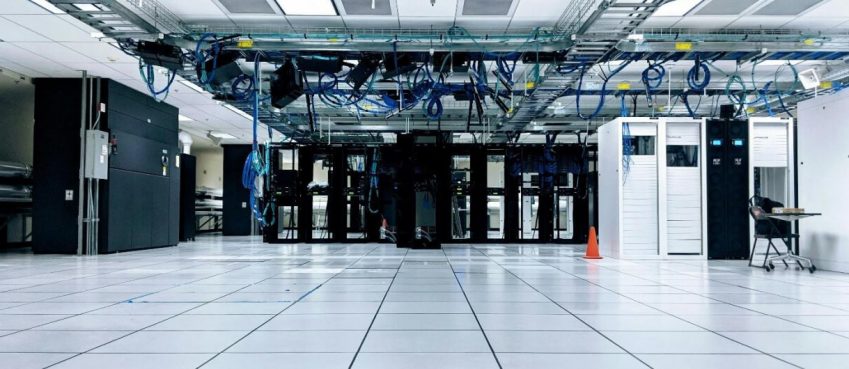
The Crucial Role of Firewalls in Cybersecurity
Firewalls are barriers that prevent malicious traffic from the internal network. The fundamental function of firewalls is unauthorized access prevention and traffic control. From the cybersecurity point of view, firewalls have a vital role. Organizations can avoid data breaches and cyber attacks by leveraging firewall solutions.
Companies need further access control to protect their resources. Unauthorized access and data loss are the main risks for many modern organizations today. Firewalls can guarantee data protection and only authorized access if they are used properly. Companies consider their client trust and financial well-being to live longer in business life. Without a robust cybersecurity plan, policy, and precautions it is impossible to exist in today’s competitive business environment. Now, cybersecurity is a must like other components of business such as capital, labor, and good management.
A firewall is an available solution to increase the security level of any corporation. Firewall preserves its popularity due to its protection-oriented architecture, usefulness, and simplicity. To benefit from firewalls, you should avoid common mistakes that undermine the protection level. You will discover the most common mistakes and some tips on how to avoid them in this article.
1. Neglecting Default Settings and Outbound Traffic Rules
Default settings are one of the most important aspects of your firewall configuration. When a company adopts a firewall system, the system comes with default accounts and passwords. Companies must change and arrange these default settings according to their requirements. They should create robust and also new password, and account systems. Otherwise, they can face cyber risks and data breaches. Firewalls can not function well if they are neglected. To continue their activity, users must arrange settings.
Furthermore, IT teams can decide on default settings to create a basic firewall architecture. Default settings should include allow or deny lists to make a standard. When default settings are neglected, the performance and security level of firewalls diminishes.
People think that firewalls monitor and control only incoming traffic. However, it is crucial to audit and assess the outbound traffic to provide total security. Companies must consider outbound traffic rules and regulate them according to new necessities and current risks.
Also read: Top 10 Helpful GitHub Storage For Web Developers2. Lack of Regular Firewall Reviews and Updates
You may hear that updates in smartphones, computers, and tablets are crucial for the security of your devices. All devices must be up-to-date to be able to defend well against brand-new cyber threats. It is the same for the firewalls. Organizations must keep their firewall systems up-to-date and review current firewalls regularly.
Companies that neglect regular firewall updates can not provide robust protection. Out-of-date firewalls can not answer new threats and defend data resources against malicious attackers. Update negligence makes your network more vulnerable. Your company becomes more prone to cyber threats. In conclusion, negligence can cause a disaster in reputational and financial aspects.
3. Misconfigured Network Address Translation (NAT) Policies
Network Address Translation is an IP mapping process that converts IP addresses while they have been routed. The ultimate goal of NAT is to diminish IP addresses and collect all of them into one. All NAT processes increase the security level of the company and add an extra layer of protection to the private network. Misconfigured NAT damages the protection ability of firewalls. IT teams must be sure that NAT is configured properly. Otherwise, they can not take advantage of the firewall benefits anymore.
4. Overlooking the Principle of Less Privilege
Less privilege refers to access permissions. Companies must limit user access to specific resources to avoid risks. The more people can access private resources the more companies face data breaches and cyber-attacks. In cybersecurity plans, companies adopt Zero Trust protection to provide less privilege. Check the Zero Trust model to learn more about the less privilege more authentication mentality.
In firewall security, less privilege should be considered. Firewall protection is strong and effective. However, some elements such as authentication and access privileges can diminish the performance of firewalls. As a company manager or IT member, take less privilege into account on your firewall protection journey.
5. Insufficient Logging and Monitoring
Logging is crucial to assess user activities, common threats, and other risky elements. A proper firewall structure can be instructed by proper logging processes. On the other hand, monitoring is also vital for robust firewall protection. Firewalls can determine threats before they damage private networks. Threat detection and data breach prevention are only possible with eligible monitoring and logging processes.
However, it can be challenging for IT teams to control logging and monitoring processes continuously. Furthermore, firewalls can fail and stop monitoring at times. These kinds of misconfigurations are common and normal. There are alternative firewall protection methods to avoid interruptions in protection. One of them is the High availability Firewall which guarantees unceasing protection. High-availability firewalls provide a high level of protection without interruption. The main feature of an HA firewall is that it activates another firewall even if one firewall fails to work. HA makes this automatic and uninterrupted way.
The consequences of continued firewall service are positive. Companies can obtain developed performance via HA firewalls. Traffic control and authentication processes become more effective and simple. Moreover, companies save time and can give instant answers to threats. Because, they do not need a long process to discover, define, and get rid of the failure that affects the private network. Moreover, they do not need to cease their daily operations. Thanks to the HA firewall, organizations stay safe when other parties try to solve the problem.
Also read: Top 10 Veo 3 AI Video Generators in 2025 (Compared & Tested)Expert Tips: How to Avoid Common Firewall Mistakes
● Create a Firewall Strategy and Policy
Policies and strategies are the key elements of a successful firewall solution. You can determine your roadmap by creating a firewall policy in your organization. A company’s requirements, weak points, employee attitudes, and prevalent risks can be a good start for creating a fundamental set of rules. Leading cyber risks in 2023 published by Statista can be a map for you. Then you can imply the necessary methods and use tools to increase your firewall security level.
● Update awareness
You know how regular updates are vital for the company’s protection. You and your team should be aware of the necessity of regular updates and keep the private network up to date. Cyber threats are changing and cyber criminals find new ways to leak into private networks. Companies can not prevent these attacks if their firewall protection is not current. Level up your resource protection by considering firewall updates. On the other hand, companies consider default settings to avoid firewall misconfigurations. Default settings are the main elements of any available firewall and should function well.
● Robust Your Authentication System
Unauthorized access poses an excellent risk to network security. Most of the data breaches stem from unauthorized access. The solution is to enhance authentication methods and avoid unauthorized people to access your very private and important data resources. Instead of passwords only, companies can imply multi-factor authentication and further methods for robust authentication processes. On the other hand, authentication includes fewer privileges that companies also consider for the benefit of their firewall security.
The gold rule is to avoid these common firewall mistakes in organizations. This is where companies can provide total firewall protection and avoid unauthorized access, data branches, and attacks.
Top 10 News
-
01
Top 10 Deep Learning Multimodal Models & Their Uses
Tuesday August 12, 2025
-
02
10 Google AI Mode Facts That Every SEOs Should Know (And Wha...
Friday July 4, 2025
-
03
Top 10 visionOS 26 Features & Announcement (With Video)
Thursday June 12, 2025
-
04
Top 10 Veo 3 AI Video Generators in 2025 (Compared & Te...
Tuesday June 10, 2025
-
05
Top 10 AI GPUs That Can Increase Work Productivity By 30% (W...
Wednesday May 28, 2025
-
06
[10 BEST] AI Influencer Generator Apps Trending Right Now
Monday March 17, 2025
-
07
The 10 Best Companies Providing Electric Fencing For Busines...
Tuesday March 11, 2025
-
08
Top 10 Social Security Fairness Act Benefits In 2025
Wednesday March 5, 2025
-
09
Top 10 AI Infrastructure Companies In The World
Tuesday February 11, 2025
-
10
What Are Top 10 Blood Thinners To Minimize Heart Disease?
Wednesday January 22, 2025







